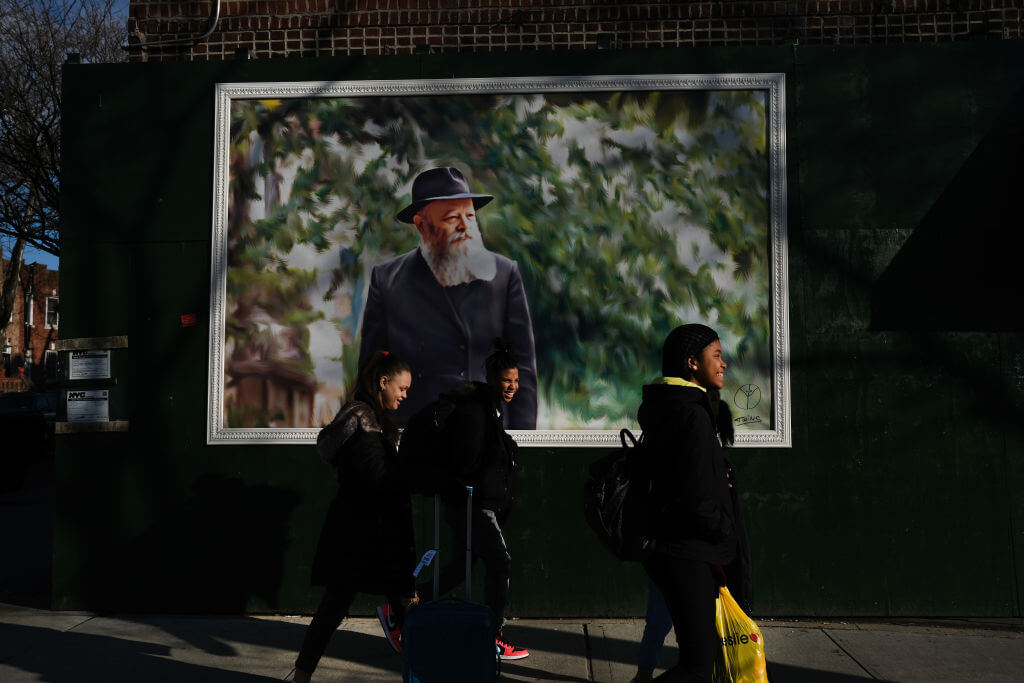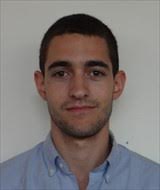A brief history of the Messianic movement that inspired the tunnel under 770 Eastern Parkway
Experts say the yeshiva students who built it saw themselves as paving the way for the rebbe’s return

A mural of the Lubavitcher Rebbe is displayed in the Crown Heights neighborhood in Brooklyn on December 31, 2019 in New York City. Photo by Spencer Platt/Getty Images
A plaque commemorating the late Rabbi Menachem Mendel Schneerson hung outside the Chabad headquarters at 770 Eastern Parkway for nearly a decade after his 1994 death.
The plaque was notable less for what it said than what it had said, before vandals chiseled out the phrase: “Of blessed memory.”
It’s a ubiquitous honorific across the Jewish world. But in Chabad ranks, when it came to Schneerson, the seventh Lubavitcher rebbe, it was a political statement, as the movement split over whether he was the Messiah, and therefore about to return to Earth — if not still alive. Those who espouse that belief publicly are known within the movement as Meshichist — Yiddish for Messianist — and have long been ostracized by Chabad-Lubavitch leadership.
The rift is most apparent at 770 Eastern Parkway, which houses both the Chabad administration that disavows Meshichist ideology and a synagogue adorned with a huge banner emblazoned with what’s known as the Yechi, the eight-word Meshichist credo.
That division burst into public view this week with a tumultuous confrontation over a secret tunnel under the headquarters by Meshichist students that led to the arrests of nine men and the temporary shutdown of the iconic 770 building.
Much remains unclear about who built the tunnel and why. Two yeshiva students who said they were involved with the project but spoke on the condition they not be named for fear of arrest said they were taking initiative on a long-deferred synagogue expansion. But some see it as part of a Messianic quest to build a Third Temple — not in Jerusalem but in Brooklyn.
“The Messianic significance of 770 is underscored by the fact that it actually needs to be expanded,” Ezra Glinter, who is writing a biography of Schneerson, said, paraphrasing the Rebbe’s teachings. “And not only does it need to be expanded, but in a manner of totally breaking through a barrier.”
Where Chabad Messianism comes from
Schneerson gave mixed signals about the identity of the Messiah during his lifetime, but left bread crumbs along the way in speeches and writings that lead many of his followers to see the rebbe as the Messiah and pray for his imminent return.
From his very first speech as the movement’s leader, Schneerson made Messianic allusion central to his philosophy, placing himself at the center. He proclaimed the seventh Lubavitch generation — his — the era in which God’s presence would reemerge in full force in the physical world.
“Which in the Chabad world means, basically, Mashiach,” Glinter said, using the Hebrew word for Messiah. “It’s a very reasonable argument to make, it’s an obvious thing to many people. But you could say, ‘Well, it wasn’t explicit.’ That he was praying that he would be, or that he would merit to be, and so forth.”
Some of Schneerson’s allusions later in life pushed Messianic enthusiasm in Chabad to a fever pitch. For example, he pointed to the fall of the Soviet Union and the Gulf War as signs that the Messiah’s return would come soon.
Then he died, on June 12, 1994, without an heir or a designated successor.
Assertions that he would return as the Messiah began to appear almost immediately, said David Berger, a professor at Yeshiva University and author of the 2001 book, The Rebbe, the Messiah, and the Scandal of Orthodox Indifference. Berger argues in the book that Messianic belief within the the Chabad-Lubavitch movement is more widespread than its leadership acknowledges.
Officially, the movement maintains an anti-Meshichist stance. It does not list Meshichistic Chabad outposts on its website’s synagogue lookup tool. Its spokesperson has publicly disavowed activists who post “Messiah Is Here!” posters around New York. And then there was the plaque, which heralded the rebbe as a person who died — of blessed memory — not a Messiah about to return.
Some Meshichists believe the rebbe will return at some unspecified point in the future, while others think he is in fact still alive. Berger said the latter is believed by only an extremist fringe — which seemed to include the group that burrowed under 770 — but the former is fairly commonly held.
Lubavitchers, though, worry that Messianism might turn mainstream Jews off from their movement. Schneerson himself seemed to worry that Messianism could thwart the spread of Hasidism, Berger said.
“In the movement, you’re not a Meshichist unless you announce it,” Berger said.
How 770 fits in
A Schneerson speech on a Talmudic passage about the third Holy Temple has become central to the Lubavitcher vision.
Schneerson taught — partly using numerology — that 770 would eventually become the model for the Holy Temple in Jerusalem.
Moreover, Glinter said, Schneerson’s vision described that mini-Temple being realized through an explosion or a breaking through a fence, “as if you were building a new building.”
The students who decided to excavate under the movement’s headquarters, Glinter surmised, may have believed that’s what they were doing.
“You can see how someone would conclude that it is an important thing — and a necessary thing — to expand 770 as a preparation for the Mashiach,” he said. “And to do it in a radical way.”
A message from our Publisher & CEO Rachel Fishman Feddersen

I hope you appreciated this article. Before you go, I’d like to ask you to please support the Forward’s award-winning, nonprofit journalism so that we can be prepared for whatever news 2025 brings.
At a time when other newsrooms are closing or cutting back, the Forward has removed its paywall and invested additional resources to report on the ground from Israel and around the U.S. on the impact of the war, rising antisemitism and polarized discourse.
Readers like you make it all possible. Support our work by becoming a Forward Member and connect with our journalism and your community.
— Rachel Fishman Feddersen, Publisher and CEO





























